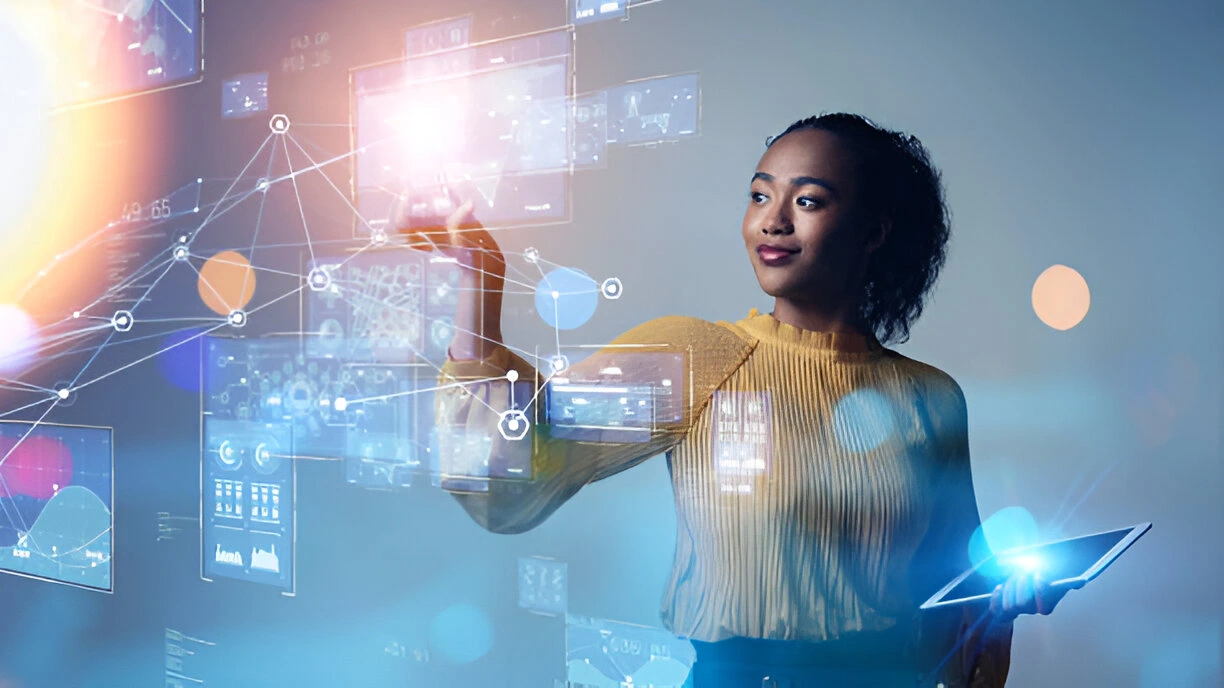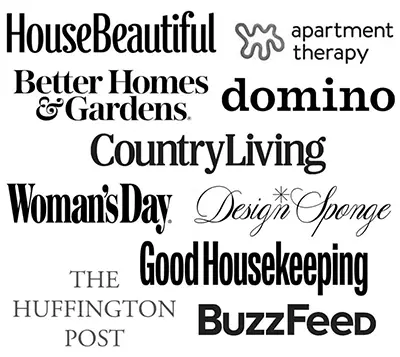Top 5 Future Applications of Smart Devices That Wow You
The same is true for much of the world- on-the-go we all occupy as it transitions towards a smarter, more connected one, in which everyday objects and systems have become intelligent and are capable of interacting, and are essential to our lives, work, and communication.
From your morning coffee maker to your bedroom mirror, smart technology is getting smarter and less restricted to novelty. The smart applications of tomorrow will bring not only increased efficiency, but a transformation of our relationship to health, education, urban living, and even mood.
Virtual assistants, smart lights, thermostats, and fitness trackers are already fixtures in many American homes. But how this plays out ahead is much more dynamic. In this post, I discuss what technologies we can expect to see in the next few years, from smart cities to health-tracking wearables, and how these technologies will transform our environment and society.

The Present Situation: The Basis for the Future
Before we delve into the future, let’s take a look at how smart devices currently work in our lives. Today, the most common smart devices use some mixture of sensors, connectivity (Wi-Fi, Bluetooth, 5G), artificial intelligence, and cloud computing. That enables them to gather data, learn from behavior, and perform tasks on their own, or at a user’s direction.
Americans are already using smart thermostats to save on energy bills, smart security systems for peace of mind, and smart speakers to control the mood, the light, and the news before bedtime. This foundation lays the groundwork for a broader, smarter ecosystem in which these devices not only listen but also anticipate.
The Future of Smart Homes
One of the most creative areas to experiment with is in our living rooms. As AI becomes more flexible and data more granular, future applications of smart devices in homes will extend well beyond timers and remote control. Picture waking up in a room that has dimmed or brightened its lights, reached room temperature, and had a scent preference orchestrated around how well you slept, your mood, and the time.
Smart kitchens will get smarter, with real-time nutrition coaching based on what’s in your fridge, your dietary goals, and your biometric data from wearables. Smart mirrors might provide you with your schedule, news briefings, or health alerts while you brush your teeth. Even your washing machine could suggest ideal settings for detergent based on the types of fibers and the environment.
It’s that everything will be completely integrated – the user won’t be able to tell which of several devices he or she is using. Rather than a disparate set of tools, the smart home of tomorrow will function as an integrated, learning entity it will know every family member’s schedule and adapt to it.
Smart Health: Getting Past Fitness Trackers
Health tech is evolving rapidly, with smart apparatus leading the charge. Instead of steps and heart rates, today’s wearables of the future will provide deep medical insights. From non-invasive blood glucose meters to wearable ECGs and hydration sensors, smart health devices will be transformative for preventive medicine.
One promising frontier is smart clothing. Laden with sensors, these clothes might keep track of your posture, temperature, breathing and muscle stress. When paired with AI, the collected data will be used to identify early signs of disease, injury, or chronic ailments.
Intelligent medication dispensers will provide accurate dosing and timing, especially for the elderly and persons with complicated regimens. The devices will link to health care providers, notifying them in real time if a dose is missed or an out-of-range reading comes in.
In the larger U.S. health system, such technologies could vastly cut hospital trips and enhance management of chronic disease. The future potential uses of smart devices in health could allow patients to take charge of their health and take the strain off medical facilities.
Smart Cities: Visions of Urban Living
The control of resources and infrastructure is becoming increasingly important in urban planning, especially in a world of growing population density. Introduce smart cities, cities that take advantage of smart devices, sensors, and data analysis to enhance everything from traffic flow to waste disposal.
And smart traffic lights that are dynamically responsive to actual congestion, public transit systems that rearrange routes based on riders’ demand and streetlights that only light up when they need to are just a few examples of what’s already happening in pilot programs across U.S. cities.
Your future neighborhood is one where air quality sensors detect pollution and alert residents, and waste bins send a message to municipal services when they’re full. Smart grid energy will be more stable in consumption, prioritize renewable sources and work to avoid outages by isolating affected areas.
These forthcoming smart device applications aren’t sci-fi; they’re moves towards more sustainable, efficient, and responsive urban living. These systems will only become more enmeshed with our everyday as 5G widens and IoT connections spread.
Education Gets Smarter
The future classroom will look dramatically different, more connected, more personalized, and a lot more fun. Smart boards, tablets and learning management systems are already commonplace in many U.S. schools, but what’s around the corner is immersive and artificial intelligence-driven.
Think students truly learning from virtual reality simulations, AI tutors that adapt in real time to a child’s learning style and smart desks that can tell if a student is on the ball or maybe needs extra attention from a teacher.
And for students who have learning differences or disabilities, smart devices provide opportunities for enhanced accessibility, such as through speech-to-text tools or haptic feedback for blind students.
At home, smart study spaces will employ environmental changes such as lighting and sound levels to enhance concentration. Parents and educators will have immediate visibility into academic achievement and mental wellness, allowing issues to be addressed before they arise.
Here’s how future use of smart devices in education will mitigate learning disparities, improve engagement, and offer more equitable opportunities for high-quality instruction
Emotional Intelligence and Smart Tools
As A.I. technology becomes more sophisticated, it is starting to understand human emotions. Affective computing, or emotional AI, is already employed in some customer service applications, but its future promise feels very personal.
Smart devices sensing mood from voice tone, facial expressions, or physiological measurements would provide emotional support, recommend mental health resources or customize your home environment. For instance, if you are stressed, you might dim the lights, play relaxing music, and silence notifications.
Parents could have emotionally intelligent baby monitors that could sense distress beyond crying. For teenagers, wearables that call for a break in times of emotional stress or that track trends in emotional health over time could be useful.
These innovations are not substitutes for human connection, but they are instruments that can elevate emotional literacy and prompt early intervention in mental well-being.

Intelligent Product for Transportation
Autonomous vehicles garner most of the attention, but the future uses of smart devices in transportation extend far beyond driverless technology. Soon, cars themselves will be smart ecosystems, able to detect if a driver is tired, to create a different climate in each passenger zone, or to provide custom entertainment or productivity features.
Public transit systems will ride smart sensors and mobile connectivity to provide, among other things, real-time route modification, seat availability monitoring, and contactless fare payments that scale based on income or frequency of use.
Smartphones will also be key to protecting pedestrians. Wearables or cell phones might warn users of hazards in their path, or traffic systems might automatically slow vehicles when children or distracted pedestrians are nearby.
Transport and people’s relationship with it will be a collaboration rather than an operation, with your surroundings being able to pre-empt your requirements and actions.
FAQ Regarding the Use of Smart Devices in the Future
What is meant by “future applications of smart devices”?
It describes emerging and novel ways in which man and machine are merging or combining, going beyond what we experience today in our smartphones and smart homes. This consists of improvements in health check-ups, smart homes, learning, city infrastructure, emotional support systems, and transportation. These apps exist to make our lives safer, more efficient, and more connected.
What will be the influence of intelligent devices on health care in the future?
Preventive care, chronic diseases, and smart devices. It's all about management. Wearables will be collecting live health data, smart medicine providers will enable adherence to medication and smart clothes will accommodate changes in the wearer’s physical condition. They can cut down on hospital visits and help support more personalized care.
Are there privacy issues in this proliferation of smart products?
Yes, the more we integrate these smart devices into the rest of our lives, the more privacy becomes an issue. They will gather even more sensitive data, your health metrics, your location, and your emotional cues. This will be a big challenge and priority for developers and regulators to make sure data is securely stored, ethically used, and not vulnerable to breaches.
Will smart homes ever become fully autonomous?
Not all the way, but homes will grow more intuitive. Intelligent gadgets will react to your behavior, automate repetitive tasks for you, and give you dynamic, real-time feedback on energy consumption, safety, health, comfort, and more. Though human intervention would still be needed, future smart homes will minimize the need for physical work while promoting a comfortable and safe living environment.
What impact will smart machines have on education?
Smart devices will enable personalized learning and help students with special needs, ensuring immersive educational experiences through VR and AI tutors. Teachers will have real-time analytics to inform their teaching, and students with receive tailored feedback and have a choice over the pace and style at which they learn.
Conclusion: A Smart Technology A Better Tomorrow
As we peer into the future, potential uses for smart devices are not simply exciting; they are transformative. They provide an opportunity like no other to transcend the way that we do life, work, and community together. Whether you’re talking smarter health at home, responsive cities, personalized learning, or emotionally savvy AI, these innovations are more than just niceties. They are devices for empowerment, replenishment, and advancement of humans.
For families, workers, educators, and lawmakers across the United States, the time to begin investing in this connected future is now. And by adopting smart technologies responsibly and ethically, we’re not just keeping up with the latest, but helping shape a future that’s bright for all our children to inherit.


